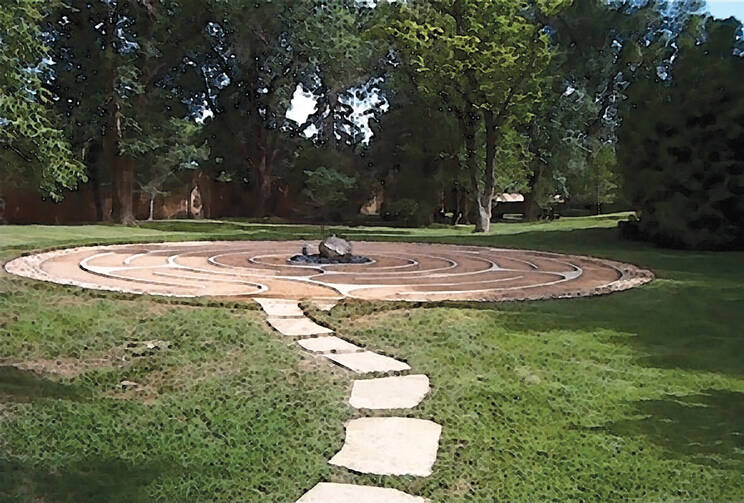The raucous crow of roosters announced my arrival as I pulled my car into the last available parking space. It was my first visit to the Canossian Spirituality Center in Albuquerque, N.M., and the day had started off in its usual, hectic way. I had overslept, burned breakfast, misplaced the car keys and, having never visited the center, gotten lost en route. By the looks of the parking lot, I was the last person to arrive. Maybe if I snuck in the back door no one would notice—except the roosters.
The speaker for the day, Paula Gallagher, I.H.M., had already taken the podium and was talking about being centered in our lives so that we can share our peace with others. How could I be centered? Where was my peace? My day, like my life, was fragmented, out of control and anything but peaceful. Nothing seemed to make sense. Trying to make as little noise as possible, I took a seat in the back row and listened as Sister Paula described things I could do to bring order to my life. She recited psalms; she played music; she asked each participant to write down one thing that caused disorder in his or her life. I wanted to write a book.
About halfway through the morning, Sister declared a 20-minute break. “Get a cup of coffee, spend some time in the chapel or walk the labyrinth.”
A labyrinth? Wasn’t walking a labyrinth some sort of ancient spiritual ritual that pagans and druids performed? How did that fit in with a Catholic Spirituality Center? My interest was piqued, and instead of sitting down with a cup of coffee, I headed outdoors.
Located on the east lawn of the center, the labyrinth was a collection of rocks that defined a spiral path leading to the center. With no idea of the “right” way to walk a labyrinth, I followed the rocks to the center, turned around and quickly retraced my steps to the beginning. Nothing happened. Reasoning that the druids might have recited a prayer or chant when they walked similar structures, I followed the path again, this time more slowly and this time reciting an Our Father and a Hail Mary.
Lost in prayer, my breathing slowed and my mind opened. I raised my eyes to the turquoise blue sky and watched a solitary cloud drift from west to east; I felt a gentle breeze ruffle my hair; I listened as mourning doves cooed in nearby trees; I smelled the familiar scent of green chili cooking in someone’s kitchen. Glancing down at my watch, I noticed the 20 minutes allotted for our break had already past. How had that happened? Even with two trips around the labyrinth, I couldn’t have been out there more than 10 minutes.
Racing back to the center, I once again took my seat in the back row and tried to pay attention as Sister Paula continued her talk. However, every time I glanced at the window, I felt as if the labyrinth was calling me back. When it came time for lunch, I bypassed the spaghetti and chocolate cake and answered the call.
Something was different as I approached the labyrinth for the second time. Suddenly, the place was not just a simple collection of rocks: It was sacred. Without knowing why, I removed my shoes, took a deep breath and entered the circle. Instead of praying, I began thinking about my life. I thought about my mistakes and my triumphs; I thought about my family and my friends; I thought about my past and my future. God had led me to this place for a reason—it was up to me to discern that reason. Was I making good use of the gifts God had given me? Did I show my family and friends unconditional love? What could I do in the future to make up for the sins of my past?
When I reached the center of the labyrinth, I realized I was carrying a small rock in my hand. Not knowing when or why I had picked up the rock, I decided it needed to stay within the circle. Bending over, I placed the rock on the large boulder positioned in the center, said an almost wordless prayer and absorbed the wonders of the world around me. Colors appeared brighter, bird songs sounded sweeter, smells seemed stronger.
Suddenly remembering I had not eaten since breakfast, I reluctantly headed back to the retreat center to see if any food was left. Along the way, I realized I was not hurrying. In fact, I was taking my time, savoring every moment of my experience.
When I entered the labyrinth for the first time, I had no idea how to act or what to expect. Once I let go of my self-absorption and surrendered to God’s will, everything changed. As it says in Ps 86:11, “Teach me, Lord, your way that I may walk in your truth.” God not only showed me how to walk the labyrinth—He showed me how to walk through life. The rest was up to me. Walking back to the center, I felt centered and at peace.








